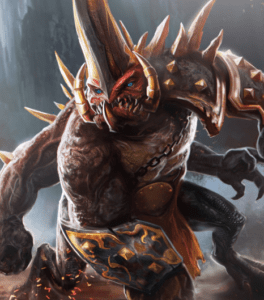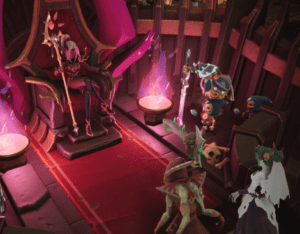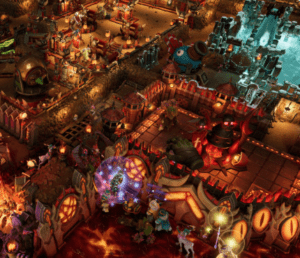You have entered Dungeon Keeper! The guide takes us deep into dark tunnels, where we must navigate treacherous passages and face fearsome monsters. This Dungeon Keeper guide will help you design, run, and defend your domain against anybody who questions your reign, regardless of your dungeon master expertise or underworld knowledge.

What is a dungeon keeper guide?
A comprehensive Dungeon Keeper tutorial helps players play and succeed at the game. This article covers dungeon setup, monster training, battle, and capturing enemy territories. The handbook covers resource management, creature recruitment, advanced methods, and common issues. Its ultimate purpose is to improve game comprehension and enjoyment.
What is the best creature in Dungeon Keeper?
- Dungeon Keeper’s “best” character is hard to choose. It depends on your strategy, dungeon setup, and playstyle. Many believe the following animals are powerful and useful:
- Many consider the Horned Reaper one of the finest monsters since it is swift, tough, and frightens others. It fights well and kills adversaries rapidly, making it helpful for assault strategies.
- Dragons are powerful and can fly over obstacles, making them dangerous. This makes it ideal for offensive and defense. Its flaming breath assault destroys opposing animals and structures.
Check out Dragon’s Dogma Armor Wiki, What is the best Armor in Dragon’s Dogma?
Who is the best hero in Dungeon Keeper?
Dungeon Keeper players have different ways of playing and choosing the “best” fighter. Monsters like the Dark Angels, Black Knights, and Dragons are popular picks among players.
What is the most powerful creature in Dungeon Keeper?
The “Dungeon Keeper” series’ most powerful monster is the player-reflecting Avatar. Late in the game, the Avatar unlocks powerful abilities that make it a formidable opponent. Avatars may be strengthened by changing and improving them. However, players may disagree on which monster is stronger. This is because each creature’s strengths and weaknesses vary by scenario and game strategy.


Combat and creature dungeon keeper
Introduction to creatures:
Different types of creatures and their roles: Cave Keeper’s animals are unique and affect your cave differently. Imps are needed for excavating and constructing, while Warlocks and Bile Demons are good at magical combat. Monsters like Trolls and Dark Mistresses are wonderful at educating and tormenting. Your dungeon needs a mix of monster kinds to operate properly and defend against attacks.
Recruitment and attracting creatures to your dungeon: You may employ creatures by utilising spawning gates, special chambers, or fighting enemies. To keep animals coming back, construct the dungeon with resting and breeding areas, training chambers, and lairs. Giving the creature what it wants, such specialised quarters or fight training, may keep them happy and loyal.
Training and improving animals:
Boosting creature stats and skills: You may teach animals to fight and be more helpful. Training chambers like the Barracks and Combat Pit help animals fight better over time. To grant creatures unique abilities or boost stats, utilize spells and rituals. Fighting also makes animals stronger and better at their professions.
Strategies for creature management and deployment: Setting work priorities based on dungeon demands and resources is crucial to creature management. Giving animals particular tasks like digging, studying, or defending maximizes their efficiency. Consider creatures’ talents, weaknesses, and unique powers while choosing battlegrounds. When animals cooperate, they may win fights.


Dungeon keeper Tips and Tricks
Understanding combat mechanics: Fighting in cave Monsters struggle to defend your cave or conquer opposing territory in Keeper, a real-time strategy game. Effective fighting strategies need knowledge of monster attributes, including attack strength, defence, and speed.
Formulating effective battle strategies: To win a fight, utilise offensive and defensive manoeuvres depending on your animals’ and opponents’ talents and faults. Battles may be won using magic, traps, and terrain layout. Another strategy to win is to monitor opposing tunnels and adjust your plans to exploit weaknesses.
Dungeon Building Basics:
- Dungeon Keeper 2 Walkthrough advises planning your cave’s layout based on size, difficulty, and theme compatibility. Each cave section should have a clear aim to boost the game’s atmosphere and enjoyment. The game is more interesting when each component of the cave has a different function, such as traps, riddles, and monster dens.
- Corridors are overlooked yet crucial layout elements that facilitate movement and strategic meeting. Passages may create tension and provide players and inhabitants tactical advantages by controlling transit flow.
- Hallways also advance the tale by guiding heroes deeper into the maze-like depths and exposing mysteries. In a well-designed cave, passages merge in with the architecture, making the experience more immersive and producing amazing gaming moments.
Advanced tactics of dungeon keeper
- Managing Your Dungeon Economy Keeping your company operating and building your power requires good dungeon economic management. Consider these advanced strategies:
- Resource Optimisation: Gold, power, and creature food are needed. Plan resource utilization based on current and future needs. Spells and artifacts accelerate resource collecting and production.
- Diversification: Avoid relying on one income. Discover methods to generate money, educating animals, manufacture artifacts, and treasure hunting. Diversifying your revenue reduces single-area risk.
- Investment and Growth: Build buildings and improve animals using your earnings. Build your cave slowly to accommodate additional creatures and tools. Prioritise purchases by long-term revenue and strategic value.
- Market manipulation: Monitor the market and adjust output as required. By increasing or decreasing supply, you may change market pricing. Economically attack competing owners to weaken their finances.
Create training and combat strategies:
Your subterranean success depends on your animals’ strength and competence. Improve your fighting with these advanced strategies:
- Skill-trained: Determine each creature’s strengths and weaknesses, then train them to their greatest potential. Give tanks, long assaults, and support units particular tasks in your army.
- Teamwork: Put together animals with complementary talents. Combine animals with complementary talents or attributes to create effective combinations. Regular training and simulated fighting enhance balance and teamwork.
- Adaptive Strategies: Adapt to the times in combat. Quickly assess the enemy’s strengths and weaknesses and adjust your plan. Try unusual approaches to surprise your opponents.
- Terrain Use: Smartly use the dungeon’s layout to win battles. Put your animals at chokepoints or favorable positions to control fights. Use natural hazards and traps to hurt unfocused foes.


You must plan carefully and use resources wisely to master Dungeon Keeper. This Dungeon Keeper guide provides advanced tactics for building terrifying dungeons, training powerful monsters, and defeating other keepers. Trust yourself in the darkness, and may your dungeon mastership be long and prosperous.

